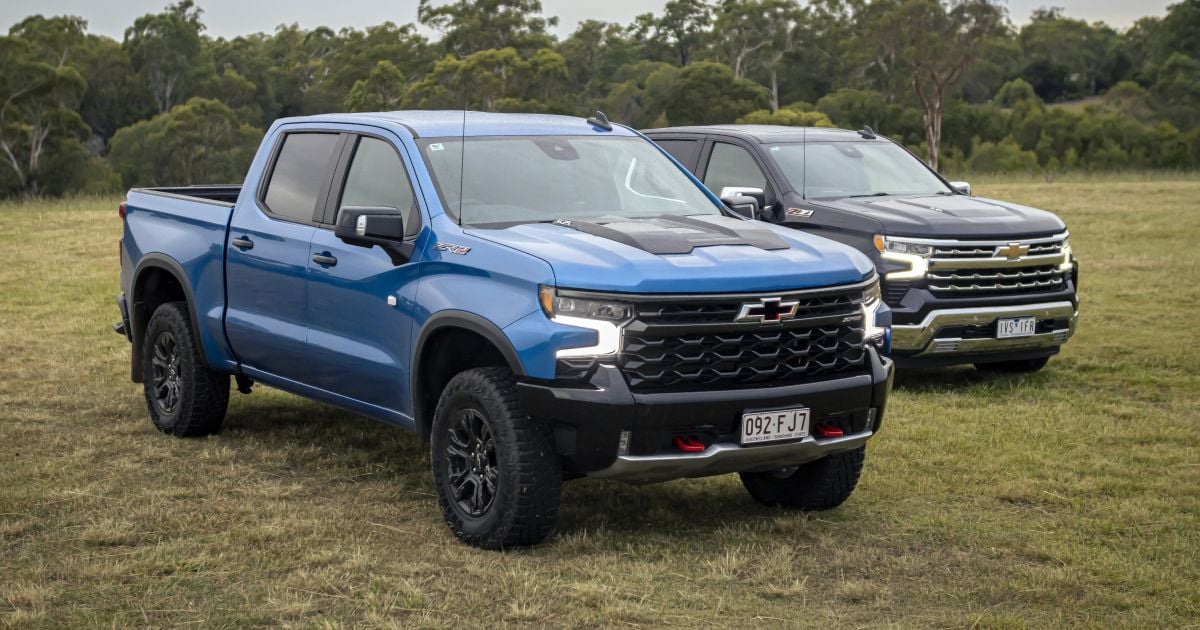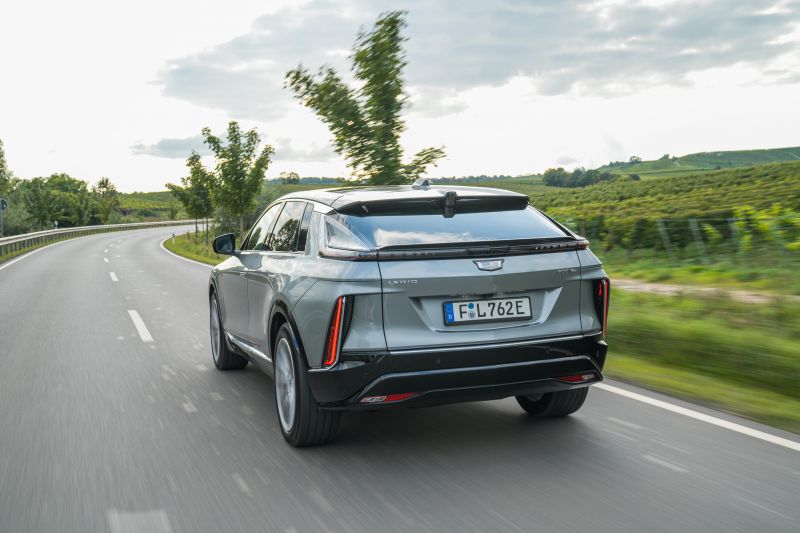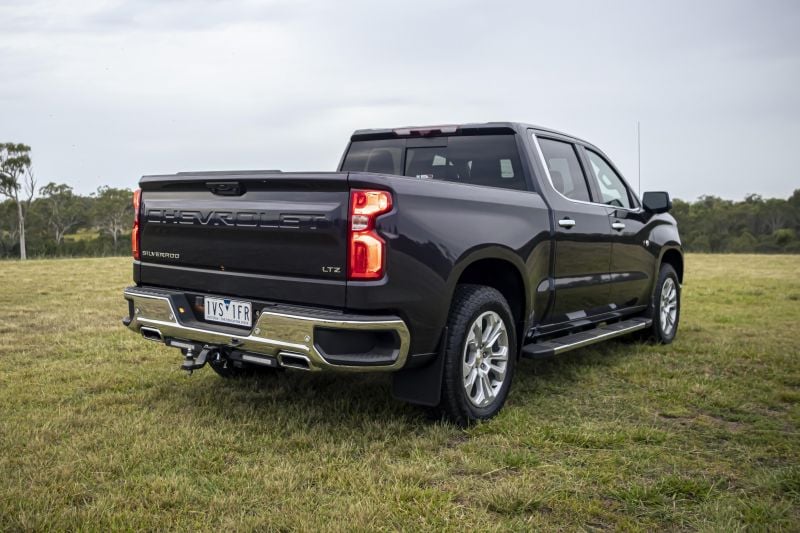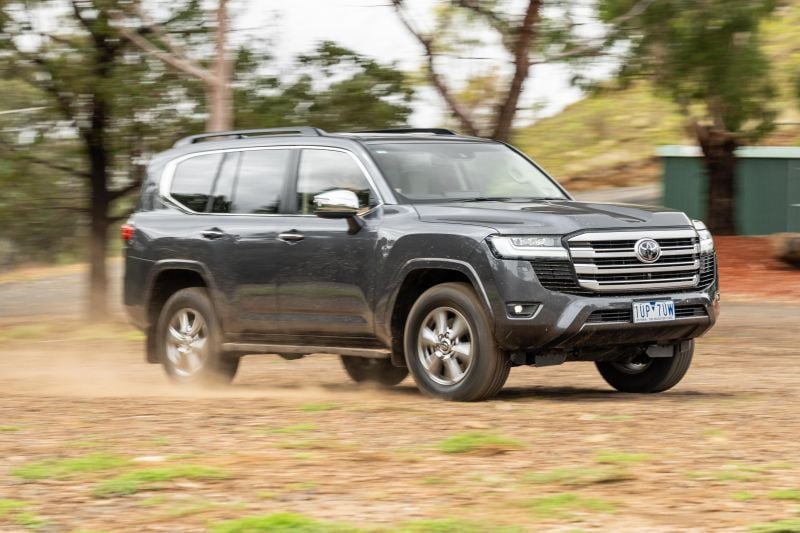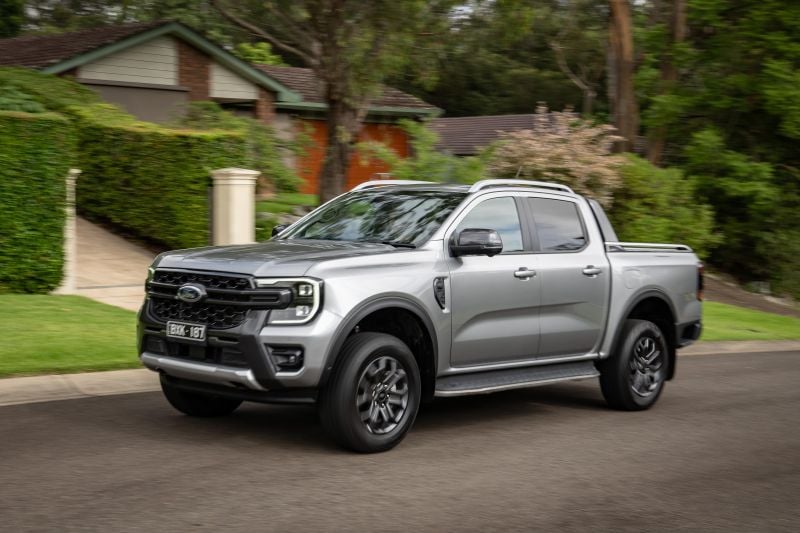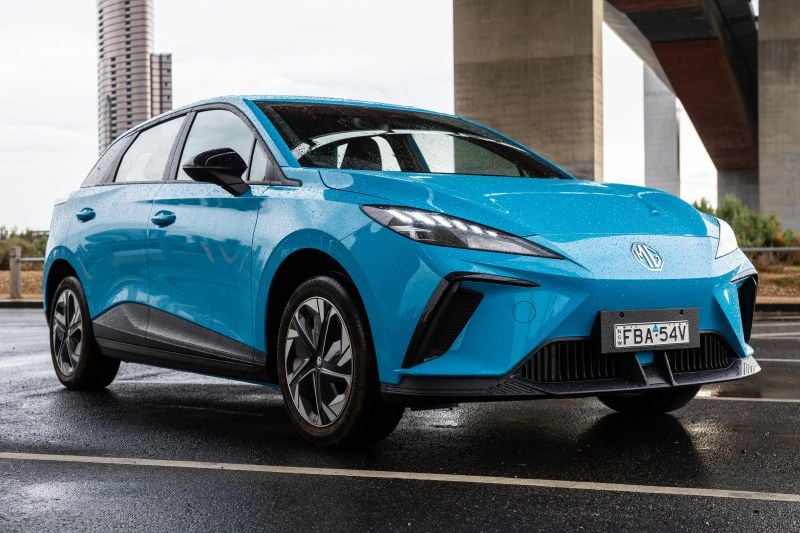General Motors Speciality Vehicles (GMSV) has committed to continuing to offer its Silverado pickups and Corvette sports car locally even as the Federal Government prepares to roll out new emissions regulations.
GM Australia and New Zealand managing director Jess Bala told CarExpert the company is “ultimately” supportive of the New Vehicle Efficiency Standard’s goal of driving down vehicle emissions in Australia, though it doesn’t currently have a preferred option.
Ms Bala also acknowledged electric vehicles (EVs) will play a large role in offsetting the emissions from its larger pickups and sports car.
GMSV doesn’t currently offer an EV, but by the end of the year the luxurious Cadillac Lyriq will debut in Australia.
“We will evaluate internally what that looks like once we know exactly where it lands obviously,” said Ms Bala to CarExpert when asking about how GMSV is viewing the proposed NVES options.
“So far we have been doing all the analysis we can on the different protocols.
“I would say we are committed to providing customers the vehicles that they want, and need, which right now for us is Silverados and Corvettes, [as well as the] soon to be added Yukon Denali about 12 months from now.
“We know that the country as a whole needs to shift towards a more sustainable future when it comes to emissions.
“But we really think that reduction in emissions and EV uptake really go hand in hand, it’s not something that can happen overnight.
“So we’re willing to work obviously with the Government and all the right regulatory bodies to make that happen.
“But our main wish for Parliament, as they work through this is they continue to have open lines of communications with … everyone that’s impacted to make sure that we all work together to come up with the right plan and proposal to get our market there without having a detrimental impact to a whole range of different industries.”
What is the Australian New Vehicle Efficiency Standard (NVES)?
The Albanese Government earlier this year announced its New Vehicle Efficiency Standard. It was consulting stakeholders on its preferred model until March 4, 2024, and said it planned to introduce legislation “as soon as possible”.
It aims for the new rules, which will affect new passenger and light commercial vehicles, to come into effect by January 1, 2025.
Car companies will be given targets for average CO2 emissions per kilometre across their vehicle fleets. Over time this CO2 target will move, forcing companies to provide vehicles with lower or zero emissions to meet stricter targets.
As with the Corportate Average Fuel Economy (US) standard in the US, which has been in effect since 1978, companies can still sell vehicles with heavier fuel consumption. However, they’ll need to offset these vehicles with more fuel efficient models.
If companies meet or beat their CO2 target, they’ll receive credits. If they miss it, they can either trade credits with a different supplier, make it up over the following two years, or pay a penalty.
The Federal Government has presented three options for NVES in Australia – A, B, and C – which are in ascending order of severity. Option B is its “preferred” model, which it calls “strong, ambitious and achievable”.
Under Option B companies would be penalised $100 per gram/kilometre over their set CO2 target.
MORE: Australian fuel efficiency standards aimed at cutting petrol bills, ‘catching up’ with US
There would be two CO2 caps: one for passenger vehicles and all SUVs; the other for utes, large pickups and vans (LCVs).
It would target a total reduction in CO2 intensity between 2024 and 2029 of 61 per cent for passenger vehicles and 62 per cent for LCVs, with average annual CO2 reductions of 12.2 and 12.4 per cent, respectively.
“We are evaluating the New Vehicles Emissions Standards proposed by the Federal Government, and implications for the vehicle portfolio we offer in Australia,” said a GMSV spokesperson.
“We believe that measures to drive down emissions and drive up EV adoption should work hand-in-hand.
“Our customers rely on our current vehicle portfolio to support their businesses and lifestyles.
“We hope the Australian Government will take a transparent approach to consultation and collaboration with all stakeholders – including OEMs and our customers and partners – to develop a program that reduces emissions and increases adoption of new propulsion technologies, including EVs.”
What does the industry have to say about NVES?
The Federal Chamber of Automotive Industries (FCAI) is the peak body for carmakers in Australia.
It has shared data claiming a Toyota LandCruiser would be slugged with a penalty of up to $13,250 under the 2025 CO2 target, with other popular models also facing penalties of several thousand dollars each.
The FCAI’s data on the top 20 best-selling cars in 2023 shows the credit or penalty they would incur in 2025 based on the lowest and highest CO2-emitting variants in their model ranges.
These penalties would be applied to the carmaker, and it would be up to them whether that is passed to the customer in the form of a price rise. These fines could also be offset by credits from low-emitting or zero-emissions cars within a brand’s showroom.
“Good public policy is created when there is transparency about the objectives and the underpinning assumptions about those objectives,” said FCAI chief executive Tony Weber.
“Obviously we hope there are changes to the proposed standards. If it goes through as formulated the impact on consumers will be enormous, particularly in two ways – the increased purchase cost of the vehicle and the availability of product in market segments.
“Consumers have two fundamental options – you can buy the vehicle that you want and if it doesn’t have the drive-train that meets the target as mooted you will pay the penalty.
“The second option is you could substitute where they’re available to a more sophisticated drivetrain that provides you with a better fuel efficiency. Typically in the future that will be EVs.”
What about climate and electric car lobby groups?
The Electric Vehicle Council, a lobby group, has called on the FCAI to withdraw its “misleading” claims about car price increases.
“Anyone who knows anything about how efficiency standards actually work across the globe would recognise the FCAI’s public claims about price are not honest or credible,” said Electric Vehicle Council chief executive Behyad Jafari.
“You won’t hear any actual carmaker echo the FCAI’s claims because they know their credibility would be shredded if they did.
“This idea that carmakers would suddenly jack up prices by huge amounts is pure fantasy, and anyone objective will tell you this. The US has had efficiency standards in place since last century, and the number one and two cars sold in America last year were both big combustion engine utes, they just build them to be more efficient.
“The idea that any model would shoot up by any significant amount can only be supported if you base you modelling on completely unrealistic assumptions, which is exactly what we now see the FCAI has been doing.
“If the FCAI wants to lobby against New Vehicle Efficiency Standards I think that’s a strange decision, but it’s their prerogative. I just think anything they tell the public should at least be based on the same – admittedly still flawed – information they tell each other.”
MORE: ‘Aggressive’ emissions standards will mean price hikes, hurt ‘middle Australia’ – Toyota
MORE: Carmakers, lobby groups go to war over cost of emissions standards to new car buyers
MORE: Volkswagen’s wish list for Australian emissions standards revealed
MORE: Hyundai backs tough emissions standard for Australian new cars
MORE: Mazda pumps the brakes on Australian efficiency standards, calls for subsidies
MORE: Mitsubishi: Emissions standards can’t forget about ‘middle Australia’
MORE: Australian dealer body criticises tougher emissions standards
MORE: What Australia’s biggest car brands have to say about tough new emissions standards
MORE: Climate lobby backs Australian emissions standards, but data leaves more questions than answers

